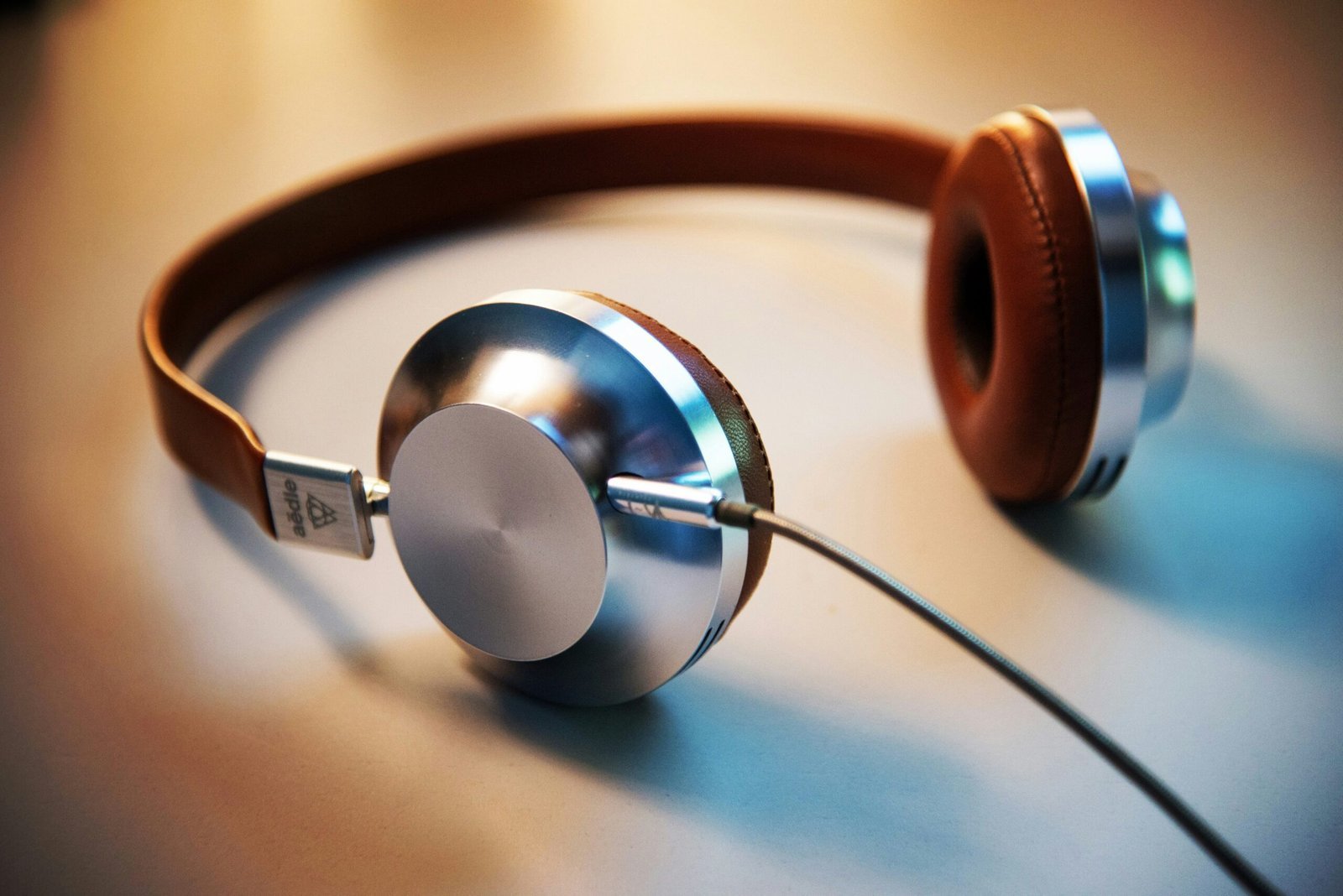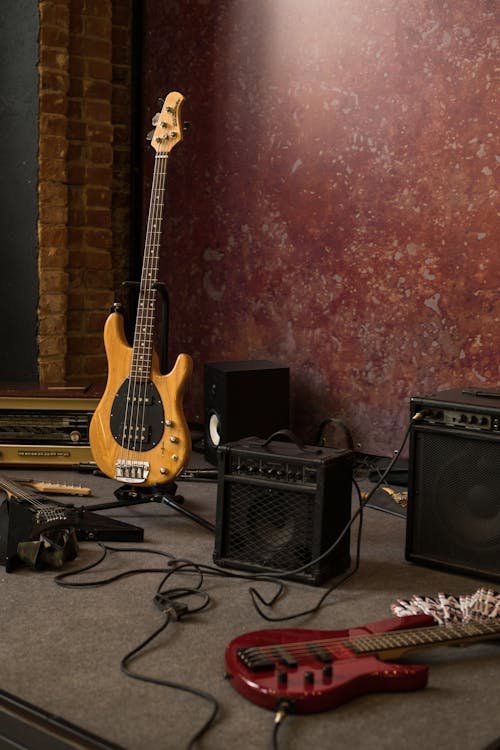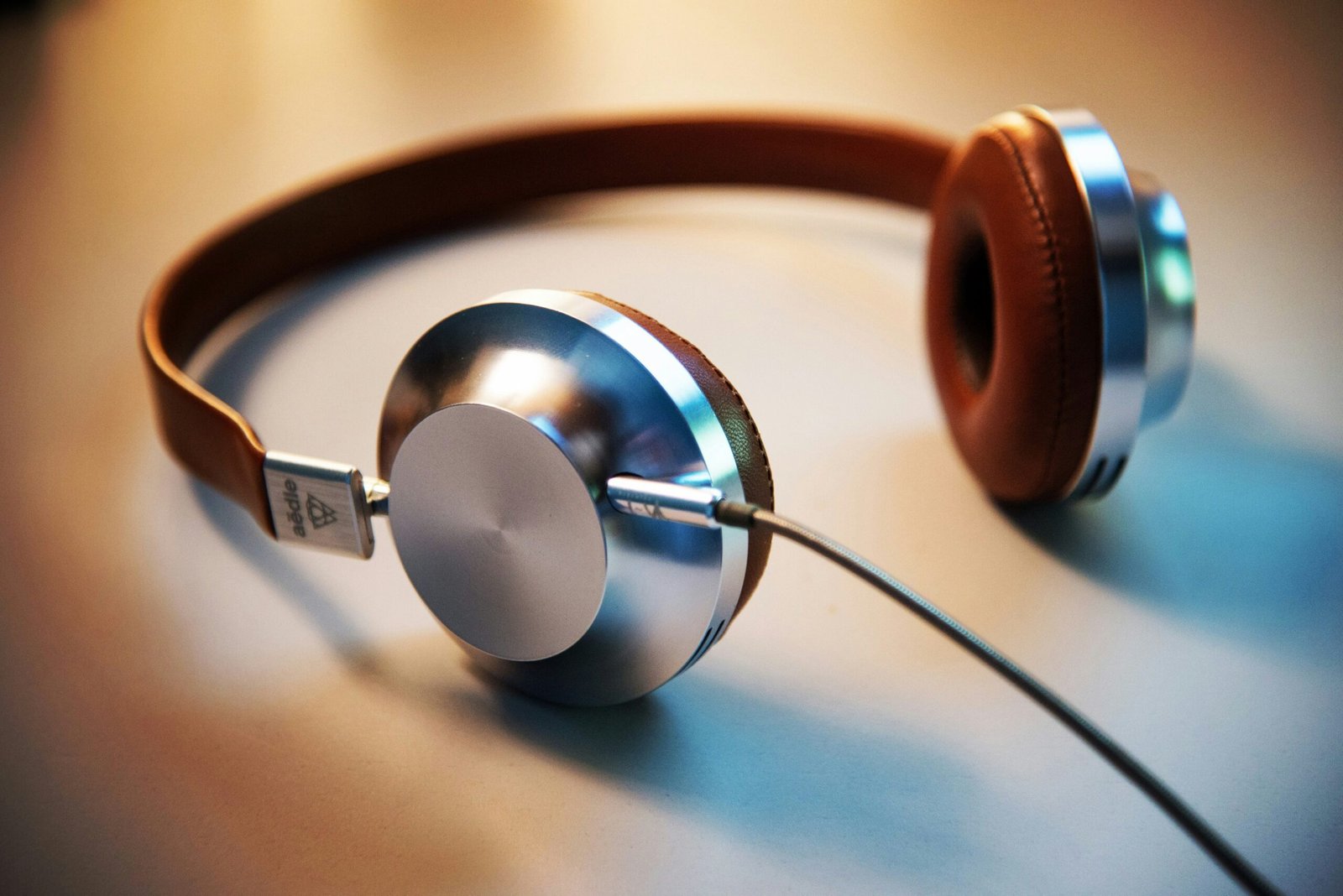
10 Essential point to Get Best Audio Cables
In the realm of professional sound equipment, the significance of audio cables cannot be overstated. These integral components serve as the conduits through which audio signals travel, maintaining the integrity and quality of sound from source to output. Without high-quality audio cables, even the most advanced sound systems can fall short, plagued by signal loss, interference, and degraded audio performance.
Various types of audio cables exist, each tailored for specific applications within the sound industry. From analog to digital, balanced to unbalanced, the array of choices can be overwhelming. Sound professionals must have a keen understanding of the distinctions between these cables to ensure optimal sound performance. Audio cables must be chosen with care, considering factors such as their construction, connectors, and shielding.
The fundamental function of audio cables is to transfer audio signals with minimal interference or degradation. High-quality cables can help preserve sound fidelity, ensuring that the audio received by an amplifier, mixer, or recording device is as true to the original as possible. Conversely, poor-quality cables can contribute to unwanted noise, signal dropouts, and general deterioration of the audio signal, which can significantly compromise sound quality.
Whether working in a recording studio, live sound environment, or any other professional audio setting, understanding the essentials of audio cables is paramount. This knowledge not only aids in making informed purchasing decisions but also plays a crucial role in troubleshooting and optimizing existing sound systems. Throughout this guide, we will explore various aspects of audio cables, shedding light on what makes each type unique and how to select the best options for your specific needs.
XLR Cables: The Professional Standard
XLR cables, known for their robust design and reliable performance, are an essential component in professional audio settings. These cables are distinguished by their three-pin connectors, which come in male and female variations. The male connectors typically output signals, while the female connectors receive them, making it easy to identify the proper connection points on audio equipment. This design ensures secure and stable connections, reducing the risk of accidental disconnections during live performances or recordings.
One of the defining characteristics of XLR cables is their balanced connection capability. A balanced connection uses three conductors to carry the audio signal: a positive (hot), a negative (cold), and a ground. This configuration is crucial in preventing electromagnetic interference and maintaining signal integrity over long distances. By balancing the audio signal, XLR cables are able to minimize noise and deliver a clean, clear sound, which is essential in high-stakes professional audio environments.
Commonly used with microphones, XLR cables are vital in live sound reinforcement, studio recordings, and broadcasting. Their ability to carry low-level signals without degrading quality makes them the go-to choice for connecting microphones to audio mixers, amplifiers, and other audio processing equipment. In addition to microphones, XLR cables are also used for connecting various other audio devices such as DI (Direct Injection) boxes, audio interfaces, and powered speakers, enabling versatile application across different audio setups.
The benefits of XLR cables extend beyond their balanced connection and gender-type design. They are renowned for their durability and reliability, often constructed with high-quality materials that withstand rigorous use. This makes them particularly suited for the demands of professional sound production, where equipment is frequently transported and subjected to demanding conditions. Sound professionals value XLR cables for their dependability under pressure, ensuring that sound quality remains uncompromised during critical performances or recordings.
TRS and TS Cables: Versatile Connectors
When considering the wide array of cables available to sound professionals, TRS (Tip-Ring-Sleeve) and TS (Tip-Sleeve) cables often come up as versatile and essential options. Although they might appear similar at first glance, their differences are critical to understanding their applications in audio settings.
Starting with TS cables, these are characterized by their two connection points: the tip, which carries the signal, and the sleeve, which acts as the ground. TS cables are commonly referred to as unbalanced cables due to their structure. They are mostly used for mono audio signals and are prevalent in instrument cables for guitars and keyboards. The simplicity of TS cables makes them a go-to option for straightforward, low-fi applications where interference is not a significant concern.
On the other hand, TRS cables add an extra connection point, the ring, between the tip and the sleeve. This addition is crucial as it allows TRS cables to carry balanced signals or stereo connections. In balanced configurations, the tip and ring carry positive and negative versions of the same signal, while the sleeve remains the ground. This arrangement is highly effective in minimizing noise and interference over longer distances, making TRS cables indispensable in professional audio environments. TRS cables also split stereo signals, found in applications such as connecting headphones or stereo mixers.
Common pieces of equipment utilizing TRS cables include professional audio interfaces, studio monitors, and external processors. In contrast, TS cables are widely used with electric guitars, amplifiers, and some synthesizers. Understanding the functional distinctions between these two types of cables can significantly enhance the reliability and quality of your audio connections, ensuring you choose the right cable for each specific scenario.
RCA Cables: Connecting Consumer Devices

RCA cables, recognizable by their distinct color coding of red, white, and yellow, occupy a prominent place in consumer audio and video connectivity. Designed initially in the 1940s by the Radio Corporation of America (RCA), these cables feature a straightforward, yet effective design. Each end of the cable consists of a central pin protruding from a round, shielded connector, ensuring efficient signal transmission while minimizing interference.
The color codes are specific to the type of signal each cable transmits. The red and white connectors carry analog audio signals, with red typically sending the right-channel audio and white handling the left-channel audio. The yellow connector, on the other hand, is designated for composite video signals. This straightforward color-coding system makes RCA cables user-friendly for hooking up various consumer devices.
RCA cables find extensive application in connecting devices such as CD players, televisions, and home theater systems. They are especially popular in older audiovisual equipment that predates the digital connectivity revolution. For example, RCA cables serve as reliable conduits for transmitting audio and video signals from a DVD player to a TV, ensuring that users experience satisfactory sound and picture quality without complex setup requirements.
However, within professional settings, RCA cables do exhibit limitations. Professional audio equipment, such as mixers, amplifiers, and studio monitors, often employ balanced connectors like XLR or TRS jacks, which provide superior noise rejection and signal integrity over longer distances. RCA cables, being unbalanced, are prone to noise and signal degradation, making them suboptimal for such demanding applications. Additionally, adopting RCA cables in professional contexts frequently necessitates the use of adapters, converting RCA connectors to more robust professional standards.
While RCA cables excel in connecting consumer audio and video devices, their inherent design constraints illustrate why professional environments favor more advanced connectivity solutions. Understanding these nuances helps sound professionals make informed decisions about integrating consumer and professional equipment effectively.
SpeakON Cables: Powering Loudspeakers
SpeakON cables are essential components in high-power audio setups, primarily used for connecting amplifiers to loudspeakers. These cables are distinguished by their unique connectors designed explicitly for professional audio applications, particularly where secure, reliable connections are paramount. What sets SpeakON connectors apart is their robust build quality and the innovative locking mechanism that ensures a secure fit, preventing accidental disconnections during live performances or high-energy events.
The SpeakON connector’s design features a twist-lock system, providing a fail-safe connection that is both easy to engage and disengage while minimizing the risk of disconnection due to vibrations or handling. This characteristic is particularly advantageous in live sound reinforcement, where stability and reliability are crucial. SpeakON cables can handle higher currents without strain, making them suitable for transmitting substantial power from amplifiers to speakers without compromising audio quality.
One of the primary benefits of SpeakON connectors is their ability to maintain excellent contact integrity, even in challenging environments. The connectors are built to endure extensive use, boasting rugged construction that includes durable external casings and reliable internal contacts. This durability translates to a longer service life and consistent performance, which is critical for sound professionals who rely on their equipment daily.
Moreover, the design of SpeakON connectors eliminates the confusion about the correct orientation when plugging in, reducing setup time and mistakes during complex audio installations. The connectors are compatible with various configurations, such as 2-pole, 4-pole, and 8-pole, offering flexibility to adapt to different system requirements.
Given these features, SpeakON cables have become the preferred choice for many audio professionals, whether in concert halls, theaters, or outdoor events. Their reliability, ease of use, and ability to deliver high-power audio connections make them indispensable in scenarios where audio quality and equipment reliability cannot be compromised.
Optical and Digital Cables: Future-Proofing Audio
Optical audio cables, commonly referred to as TOSLINK (Toshiba Link), and other digital audio cables, such as AES/EBU (Audio Engineering Society/European Broadcasting Union) and S/PDIF (Sony/Philips Digital Interface), play a pivotal role in ensuring high fidelity in digital audio signal transmission. These cables are integral to the functionality of modern digital audio workstations, home theater systems, and networked audio setups, providing a seamless conduit for pristine sound quality.
TOSLINK cables utilize optical fibers to transmit light-based signals, which makes them immune to electromagnetic interference (EMI) and radio frequency interference (RFI). This ensures a clean, unaltered transfer of digital audio data. The light pulses transmitted by TOSLINK maintain the integrity of the original audio signal, leading to superior sound reproduction. Additionally, TOSLINK connectors are user-friendly, requiring no special tools or expertise to set up.
On the other hand, AES/EBU and S/PDIF are coaxial digital audio cables that transmit electrical signals. AES/EBU is typically used in professional audio environments, often featuring XLR connectors. This standard supports both balanced and unbalanced connections, providing flexibility and reliability in varied professional settings. S/PDIF, meanwhile, is widely adopted in consumer audio applications and can employ either coaxial or TOSLINK connectors, making it versatile for both professional and home use.
The importance of these digital audio cables lies in their ability to reduce noise and interference, a significant advantage over traditional analog cables. Digital transmissions are inherently resistant to signal degradation caused by EMI and RFI, resulting in a clearer, more precise audio experience. This is particularly essential in high-definition audio systems where even minor signal disruptions can be detrimental to sound quality.
In modern setups, incorporating optical and digital cables allows sound professionals and enthusiasts alike to future-proof their audio systems. Given their resilience against noise and their superior signal fidelity, these cables are indispensable in achieving the highest levels of audio clarity and performance. As digital audio technology continues to evolve, the adoption of these cables ensures compatibility and longevity in an ever-advancing auditory landscape.
MIDI Cables: Connecting Musical Gear
MIDI, or Musical Instrument Digital Interface, cables play a pivotal role in modern music production and live performances. Primarily designed for connecting electronic musical instruments, controllers, and computers, MIDI cables facilitate the transfer of musical data between devices. The information transmitted through these cables encompasses note sequences, instrument patches, and synchronization signals—everything needed to ensure a cohesive musical performance or recording session.
Physically, MIDI cables are characterized by their 5-pin DIN connectors, which are universally recognized in the music industry. These connectors are designed to ensure a steady and reliable connection, capable of carrying the data transmissions required for intricate musical compositions and performances. The construction of these cables allows them to be both sturdy and flexible, with lengths varying based on the specific needs of the studio or stage setup.
In recording studios, MIDI cables are integral in linking digital keyboards, drum machines, and computers. They enable musicians and producers to capture every nuance of a performance and seamlessly integrate a variety of instruments. This capability is particularly beneficial for music production, where precision and synchronization are paramount. The versatility of MIDI allows for extensive post-production editing without sacrificing the original quality of the performance.
During live performances, MIDI cables facilitate dynamic and interactive shows. Musicians frequently use these cables to connect their controllers and instruments to central sequencers or computers, effectively managing complex arrangements and live visuals. The standardized use of MIDI ensures that diverse equipment can communicate efficiently, making it a cornerstone in the setup of modern live acts.
Understanding and utilizing MIDI cables significantly enhances the capabilities of sound professionals, making them indispensable in both creative and technical aspects of music production. Whether in the studio or on stage, MIDI cables ensure that the interconnected network of musical gear operates in harmony, allowing for innovative and expressive musical experiences.
Choosing the Right Cable for Your Needs
Sound professionals often face the challenge of selecting the right cable for their specific needs. This process involves understanding various key factors, including signal type, cable length, shielding, and connector types. To ensure optimal audio performance, recognizing these elements is crucial. but these 10 Essential point to Get Best Audio Cables help you out to find
One primary consideration is the signal type. Analog and digital signals have different requirements. Analog cables, typically unbalanced, are more susceptible to interference and noise, especially over long distances. Digital cables, designed for transmitting digital audio signals, minimize such distortions but require higher-quality construction.
Cable length also plays a significant role. Longer cables can introduce latency and signal degradation, impacting sound quality. When working with extended cable runs, particularly over 25 feet, balanced cables are preferred due to their design, which reduces noise and interference. For shorter runs, unbalanced cables may suffice, but careful attention must still be paid to shielding.
Shielding is another critical factor. Cables are often exposed to various sources of electromagnetic interference, which can introduce noise and compromise audio quality. Cables with effective shielding, whether through braided or foil shielding, are essential to maintain signal integrity. Understanding the environment in which the cables will operate can help determine the appropriate level of shielding required.
https://bilalelectronics.com/product-category/connector/The types of connectors used also matter significantly. Common connectors include XLR, TRS, and RCA. Each type has its specific uses, with XLR connectors being preferred for professional audio due to their durability and balanced connection. Ensuring compatibility between devices and connectors is essential for reliable performance.
Maintaining and storing cables correctly also ensures longevity and reliability. Cables should be coiled properly to prevent internal wire breakage, and stored in a cool, dry environment to avoid deterioration. Labeling cables can also help in quickly identifying and deploying the right one for the task at hand.
Balancing cost and quality is often a dilemma. While higher-priced cables typically offer better construction and durability, budget constraints might necessitate a compromise. However, investing in mid-range, well-constructed cables can often provide the best balance between cost-effectiveness and performance reliability.

